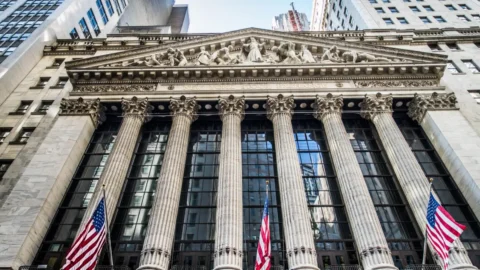RGWM Market Thoughts – October 30, 2018
The significant changes in the equity markets this month have provided an opportunity to re-allocate our RG TAAP portfolios. During the last rebalance in July, we changed some of the individual sector allocations in order to reduce the overall portfolio risk and today we see the see current environment as an opportunity to change risk allocations again.
As we talked about in our last note, the biggest concern for many investors is not the current downturn, but whether this market action is a bellwether for more significant losses down the road. The dreaded “R word” – recession – has slowly moved to the forefront of many investors mind set. From our perspective, and more importantly – economic data perspective – the economy does not look to be in any danger of entering a recessionary stage. In fact, that alone is one of the reasons that this current market decline has been so hard to figure out. Equity markets are trading as if there is an imminent economic downturn on the horizon, while the data would indicate no cause for alarm.
These types of markets understandably make many people nervous because of the increased market volatility and the seemingly indiscriminate selling across equities. However, as we pointed out in our last note, higher volatility has tended to be the more normal condition for equity markets. Indeed, the last ten years of ZIRP (zero interest rate policy) has muted volatility to the extent that many investors don’t recognize a historically “normal” volatility environment. One of the interesting things that we have picked up over the last few weeks as we have attended investment conferences is that investor sentiment is more bearish today than at any time since 2014. This is a marked change in sentiment from early this summer – even though the S&P is virtually at the same level now as in the beginning of May. Given that sentiment, we thought it would be useful to answer some of the questions that clients have asked over the past few weeks.
Does the market sell-off mean that the US is headed for recession?
We discussed this in greater length last month, but given where everything sits today, our answer would be a resounding NO. Why?
- The economy is still growing. PMI data for both manufacturing and non-manufacturing is still in expansion mode. Small business and consumer confidence are both near all-time high levels. Wages are moving higher as unemployment rate declines. These are not indications that we are entering a recessionary period.
- Earnings growth is still strong. The most recent earnings data is showing that 75% of the companies reporting are beating estimates – which is higher than the historical average of 64%. One potential issue that bears watching is top-line growth – 50% of companies have reported beating quarterly revenue estimates – slightly below the historical 60% average.
- Monetary Policy is NOT Restrictive – One of the most reliable “recession indicators” has been when the Fed Funds rate has exceeded “nominal GDP”. Nominal GDP is the real rate plus inflation. For the Fed to be viewed as being too tight, Fed Funds would have to approximate 4.5% – 5%. (GDP of 3% +1.5-2% inflation rate). That is double the current Fed rate and we are still in growth mode. Unless economic growth slows significantly, we are at least two years away from even approaching this level.
Could these conditions change? Absolutely. But right now, these measures are more consistent with a positive environment for stocks than a negative one.
Why are you buying equities when the market is going down?
One of the biggest issues that individual investors face during market declines is the psychological impact of loss. This is a behavioral finance concept known as “loss aversion”. Briefly, it means that investors feel the pain of loss twice as much as the satisfaction of a gain. Studies have shown that people would have to win $200 to make up for a potential $100 loss even if the odds were equal. This dynamic shows up in investor behavior during market declines. Psychology pushes many investors to sell stocks because of the fear of losing more money. What many investors do not realize is that markets are going down all the time. Since 1987, there have been 17 periods of greater than a 10% correction – roughly once every two years. Since 1927 there have been 218 periods of a 5% market decline – about twice a year statistically. If you are a short-term trader, these can either be great opportunities or they can be disasters to your net worth.
However, our risk philosophy is not predicated over the short term. We have a process that looks at several risk factors that consider the correlation and relative risks of different asset classes. When prices fall without the relative risk materially increasing, then we will allocate toward the best risk-reward investment. The biggest risk that investors make is trying to “time the market”. If you are a long-term investor, the goal is to adjust exposure up or down depending on the relative risks in the marketplace. Identifying absolute market tops and bottoms is extremely difficult. If you were the unluckiest investor ever and put all your money in the market on October 1st, 1987, you would have lost 30% of your money after the October 19th market crash. However, just two years later you would have been up 16% – an average return of almost 8% a year. So much for being unlucky.
How will the Mid-Term elections affect the markets?
According to election data from our independent research sources, the most likely scenario is a split between the House and the Senate. However, there is a 40% probability of the Republicans carrying both and only an 8% probability of the Democrats doing the same. The markets do not seem to be pricing in a Republican sweep, which could be a significant upside catalyst. One interesting fact is that the S&P 500 has not declined in the 12 months following a midterm election since 1946. This may have more to do with the political process than market forces, but the average return in the following year has been 15.4%. The basic theory is that Presidents tend to focus on their own reelection efforts after the midterm election and push for more generous fiscal policies such as tax cuts. Markets tend to reflect the increased probabilities that these policies will spur economic growth. We saw this with Obama extending Bush tax cuts in 2010 and with Trump already laying the groundwork for additional tax relief.
Isn’t the market too expensive to invest in today?
From an overall perspective, the S&P is cheap compared to its average valuation over the past 20 years. The trailing 12-month Price/Earnings ratio (P/E) is currently 18.0x versus a 20-year average of 19.5. Using the PEG ratio (Price/Earnings to Growth) which incorporates a growth component shows the ratio at 1.3x versus a longer-term average of 1.5x. While these are not the only valuation metrics to pay attention to, from an overall perspective this is not an expensive market environment.
Certain sectors, like energy and financials are extremely cheap relative to historical averages. Even the technology sector, which has been sold off severely on perceived valuation and growth concerns, does not seem expensive relative to past benchmarks. Amazon provides a good example of the current mindset. Their recent earnings report was a strong beat on EPS, but they offered somewhat weaker revenue guidance for the 4th quarter. In the current “sell first, ask later” environment, the stock has sold off 23% due to fears of “peak earnings’.
What is RGWM doing in our portfolios?
Fixed Income – The changes within the fixed income portfolios will accomplish two primary objectives. We continue to reduce the effective duration of the fixed income exposure in order to take advantage of what we feel will be a longer-term rising interest rate environment. We will continue to look for opportunities to do so going forward until we see the yield curve has “normalized” in relation to economic growth.
We have also reduced the overall level of fixed income exposure from 3-5% depending upon the specific portfolio. This exposure will be re-allocated to equities.
Equity – We are increasing our equity risk allocation by approximately 3-5% across our portfolios. Specifically, we are implementing the following changes:
- Increasing Tech exposure by 2% – this reverses the trade that we did in July and gives us new exposure at a significantly lower level.
- Increasing exposure to Financial sector by 2-3%
- Increase exposure to US equities by 5%
- Decrease exposure to European equities by 5%
We believe that these changes will allow us to take advantage of quickly shifting risk dynamics in the market.
As always, please do not hesitate to contact our office if you would like further explanation or clarification.
Need Some Help?
If you’d like some help from one of our CPAs or CERTIFIED FINANCIAL PLANNER (CFP®) advisors regarding this strategy and how it applies to you, the Rhame & Gorrell Wealth Management team is here to help.
Our experienced Wealth Managers facilitate our entire suite of services including financial planning, investment management, tax optimization, estate planning, and more to our valued clients.
Feel free to contact us at (832) 789-1100, [email protected], or click the button below to schedule your complimentary consultation today.
IMPORTANT DISCLOSURES:
Corporate benefits may change at any point in time. Be sure to consult with human resources and review Summary Plan Description(s) before implementing any strategy discussed herein.Rhame & Gorrell Wealth Management, LLC (“RGWM”) is an SEC registered investment adviser with its principal place of business in the State of Texas. Registration as an investment adviser is not an endorsement by securities regulators and does not imply that RGWM has attained a certain level of skill, training, or ability. This material has been prepared for informational purposes only, and is not intended to provide, and should not be relied on for, tax, legal or accounting advice. You should consult your own CPA or tax professional before engaging in any transaction. The effectiveness of any of the strategies described will depend on your individual situation and should not be construed as personalized investment advice. Past performance may not be indicative of future results and does not guarantee future positive returns.
For additional information about RGWM, including fees and services, send for our Firm Disclosure Brochures as set forth on Form ADV Part 2A and Part 3 by contacting the Firm directly. You can also access our Firm Brochures at www.adviserinfo.sec.gov. Please read the disclosure brochures carefully before you invest or send money.













